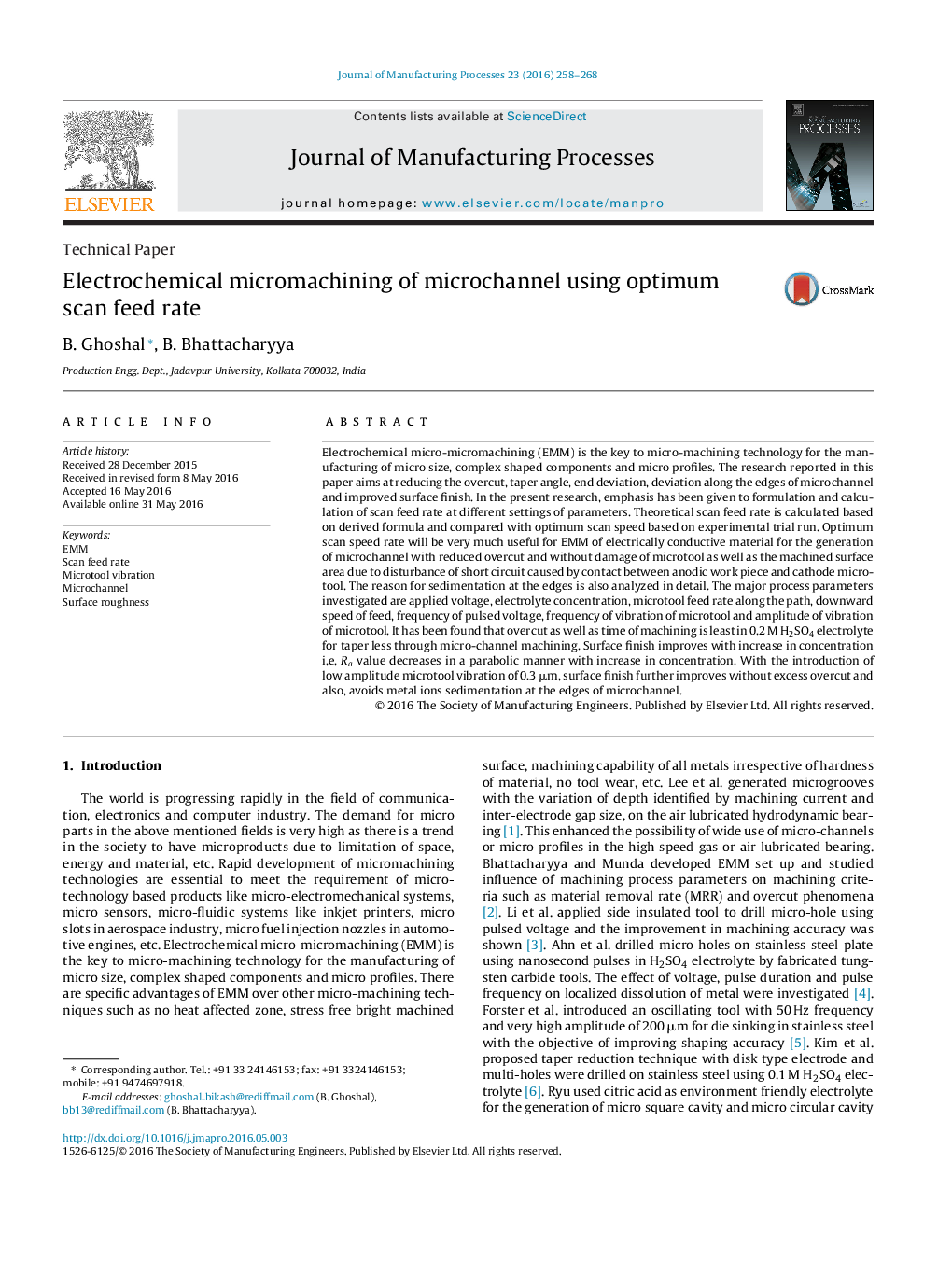| Article ID | Journal | Published Year | Pages | File Type |
|---|---|---|---|---|
| 1696866 | Journal of Manufacturing Processes | 2016 | 11 Pages |
•Formulation of optimum scan feed rate of microtool for generation of microchannel.•Investigation into EMM of through and blind microchannel generated by scanning method.•Lesser overcut and machining time of through taperless microchannel in 0.2 M H2SO4.•Taperless through microchannel can also be generated by scanning method in EMM.•Good quality of surface generation by applying vibration of microtool in EMM.
Electrochemical micro-micromachining (EMM) is the key to micro-machining technology for the manufacturing of micro size, complex shaped components and micro profiles. The research reported in this paper aims at reducing the overcut, taper angle, end deviation, deviation along the edges of microchannel and improved surface finish. In the present research, emphasis has been given to formulation and calculation of scan feed rate at different settings of parameters. Theoretical scan feed rate is calculated based on derived formula and compared with optimum scan speed based on experimental trial run. Optimum scan speed rate will be very much useful for EMM of electrically conductive material for the generation of microchannel with reduced overcut and without damage of microtool as well as the machined surface area due to disturbance of short circuit caused by contact between anodic work piece and cathode microtool. The reason for sedimentation at the edges is also analyzed in detail. The major process parameters investigated are applied voltage, electrolyte concentration, microtool feed rate along the path, downward speed of feed, frequency of pulsed voltage, frequency of vibration of microtool and amplitude of vibration of microtool. It has been found that overcut as well as time of machining is least in 0.2 M H2SO4 electrolyte for taper less through micro-channel machining. Surface finish improves with increase in concentration i.e. Ra value decreases in a parabolic manner with increase in concentration. With the introduction of low amplitude microtool vibration of 0.3 μm, surface finish further improves without excess overcut and also, avoids metal ions sedimentation at the edges of microchannel.
